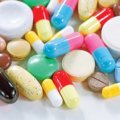Some corporations are having trouble adjusting to the new international of green finance. But for Starbucks, it’s a natural fit. The Seattle-based company is “operating to make coffee the arena’s first sustainable agricultural product.” Its former leader, Howard Schultz, who is now a presidential hopeful, championed sustainability for many years.
So it is no wonder that Starbucks is one of the most distinguished American examples of a developing global motion that sees groups trouble debt to fund environmentally friendly or socially worthwhile reasons. This week, Starbucks borrowed $1bn via its biggest-sustainable bond. It has raised around $1.3bn through preceding such bonds, the primary of which came in 2016 and the second launched in Japan in 2017. The ultra-modern circulate garnered superb headlines.
So what is going to the organization to spend the cash on? From its assertion this week.
As with the two formerly issued Sustainability Bonds, funds will help ethically sourced coffee. The scope consists of purchasing espresso. This is demonstrated by using Coffee and Farmer Equity (C.A.F.E.) Practices include the ongoing development and operation of Farmer Support Centers and agronomy research and improvement centers in espresso-growing areas around the arena, as well as new and refinanced loans to coffee farmers through Starbucks’ 50 million Global Farmer Fund.
It can even fund the corporation’s “greener stores” initiative, introduced in September last year, with objectives to “layout, construct and function 10,000 greener stores globally via 2025″. In light of that significant listing, it’s well worth revisiting what the proceeds of the closing bonds were spent on. When the 2016 bond was launched, the organization said the proceeds could be spent on a similar listing: purchases of ethically sourced espresso, developing farmer assist centers and making loans to farmers.
Starbucks publishes files updating the use of its sustainable bonds’ proceeds. For the preceding two bonds, over 98 percent became spent on ethically sourced coffee. But how good deal of Starbucks coffee is ethically sourced? That would be 99 percent. In truth, the rate has been at ninety-nine, keeping with cents, according to its recommendations, since 2015.
In other words, Starbucks spent almost all of the cash on buying coffee, which is not distinguishable from the coffee it buys anyway, given nearly all of that espresso is ethically sourced in terms of its tips. The enterprise doesn’t expose how an awful lot of espresso it buys every 12 months, but as of October 2017, it had $1.2bn of purchase commitments for inexperienced espresso. At the same time, in 2016, this figure became $1.1bn. So, it’s truthful to assume the previous sustainable bonds have financed a massive portion of its coffee purchases over recent years.
The different projects mentioned in each click release received a small amount of investment: most effectively, $6.6m of Starbucks’ $500 m 2016 bond went on something other than coffee (farmer loans and improvement centers). We asked Starbucks for the anticipated breakdown for its new $1bn bonds. The enterprise stated it’s “constructing in flexibility to plan over several years on how we determine the funds need to be nicely used.”
The previous bonds were all fully spent within the first year. Given they had been nearly entirely used to buying coffee, their claim to sustainability rests on CAFÉ, a set of tips used by Starbucks in 2004 to assess the supply chains through which it makes purchases. The suggestions cover over 200 social, monetary,y, and environmental signs and are independently evaluated through a network of third events. They have advanced in collaboration with Conservation International. This US non-income company has partnerships with dozens of firm groups, such as Walmart, Amazon, McDonald’s, and Shell, and has furnished exams of the program given in 2008.
According to an impact record from Conservation International a few years ago, only a minimal number of “zero tolerance” incidents occur when providers do not meet suggestions. In 2015, for instance, there were over three hundred incidents. At the time, the program covered 256,000 farms, 23 nations, and 1.3 million temporary and permanent employees.
The new bond, as well as purchases of coffee, is set to fund greener shops. However, the 10,000 shops the parent referred to earlier also include stores that need to be renovated. Starbucks could not figure out the number of stores that could be new rather than refurbished. However, in response to questions regarding the bond, it was said that “a very significant part of the proceeds might be used for non-coffee expenses.”











